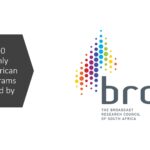
Its influence has played a controversial role in the outcome of the US elections, Brexit, and even in the politics of our own country, with a UK-based PR company working around the clock to save the image of one of the most vilified and politically influential families in South Africa. And it doesn’t seem like Fake News is going away anytime soon, with the newly elected POTUS continuing to fire accusations at every reporter or news network that dare use his name in vain.
“You are fake news!” claimed President Trump in an I-know-you-are-but-what-am-I tone, pointing a finger at a CNN journalist earlier this year. This coming not long after the news organisation released excerpts from an unsubstantiated dossier, which showered the commander-in-chief with accusations of very unfavourable findings.
Where did it all begin?
While Trump did not coin the phrase, he certainly boosted its popularity. But despite its recent explosion into the public zeitgeist, Fake News has had just about as many names as the late musician Prince.
There was the grandfather of Fake News, propaganda, used by both the best and worst politicians to forward their various political agendas. And now today, in our screen-filled digital world, Fake News has spawned a slippery cousin called clickbait, to entice curious internet and social media users. “Yes, simply click on this link and discover the secret to earning $10 000 a week, just like #PeterFromDurban.” Even less nefarious satire sites like The Onion and ClickHole have been dragged into the fray. This is because folks like Russel confuse them for legitimate news sources.

The real culprits, however, come from much more professional organisations that look, sound and play the part of real news sources, but in reality, aim to intentionally spread fictional and scathing stories with a very particular end in mind.
In the news
With news headlines like these, who needs Salt Bae, Zapiro cartoons, or the promise of Ed Sheeran appearing in Game of Thrones (apparently, this is something to be excited about)? You can’t make this kind of stuff up! Except, yes, you can… especially if it means fast money in your pocket. The news may be fake, but the advertising payload is very real.
This is the driving force behind hundreds of fake news sites littering social media. And where do you think the average Joes of the world get all their news? Of course, a little birdie called Twitter told them – or worse, your fiercely conservative and oft-racist aunt Margret. We all know that person, the one who believes and shares any story on Facebook, no matter how crazy, as long as it aligns with their dated world view.
And according to Buzzfeed’s latest analysis, Fake News articles are giving coinciding real news a serious beat down in terms of traction. It probably doesn’t help that some established news sources have even been picking up and running these stories. When the industry pros can’t tell real from fake, how can everyone else be expected to? No wonder people are beginning to distrust mainstream media. But what does that have to do with the rest of the communications industry? Well, we’re getting the brunt of the blame.
In advertising, PR and other communications sectors
If fake news sites like the one uncovered by NPR only exist to sell products and services for shady advertisers – while piggybacking on sensationalist journalism to do it – shady or not, we’re all implicated in the eyes of the public.
PR and advertising rely heavily on credibility, and the Fake News phenomenon is sure to instil a sense of scepticism in audiences across the board. However, it also presents an opportunity for our industry – to transform it instead of dismantling it.
Fake news as a disruptor
Going forward, content specialists will have to become more committed to fact checking their sources, conducting more of their own independent investigations and research, innovating and collaborating with other like-minded organisations, as well as finding other ways to foster trust with their audiences. The public will also need to practice being more discerning in their news consumption.
All this demonstrates how fake news has become a disruptive force in the industry, compelling every participant in the information cycle to become hyper-vigilant and ultimately accountable in reshaping the communications industry – a necessity if trustworthy news and content is to survive.
- Automation and AI: Super-Tools to level up your business - 24th July 2024
- Salesforce Launches First Autonomous AI Agent - 19th July 2024
- WPP champions inclusive creativity at inaugural Unite South Africa Awards during Pride Month - 19th July 2024





